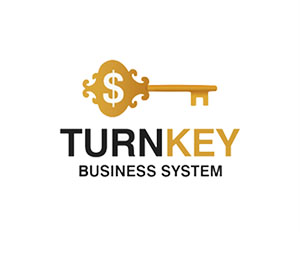Price or Quality? The Economics of Choosing a Price Quote Provider for a Startup Broker

Price or Quality? The Economics of Choosing a Price Quote Provider for a Startup Broker
The modern forex and CFD brokerage market is turning the quality of price quotes into a strategic asset. In 2025, the accuracy, depth, and speed of the feeds provided will directly determine whether a broker can retain traders and compete with industry leaders.
The role of the quote provider in the broker's infrastructure
For a brokerage startup, the price feed is the foundation of the entire ecosystem.The price feed provider determines:
correct execution of orders (especially with low liquidity);
quality of backtests and trading strategies;
brand reputation through spread stability and the absence of requotes.
According to Finance Magnates, up to 67% of trader complaints about new brokers in 2024–2025 concerned incorrect or delayed quotes.

Price or Quality? The Economics of Choosing a Price Quote Provider for a Startup Broker
Price vs. Quality: The Economics of Trade-Off
Choosing between a "cheap" and "accurate" provider is a matter of survival for a startup broker.Below is an example of the price range in the provider market in 2025:
Supplier type Average price per month Average delay Depth of the glass
White-label aggregators $300–$800 150–250 ms 2-3 levels
Tier-2 providers (ECN, DMA) $1200–$2500 60–120 ms 5-8 levels
Tier-1 institutional feeds $4,000–$9,000 <40 ms up to 20 levels
Saving on quotes often comes at the cost of execution: an extra 100 ms of delay with a volume of USD 10 million per day can cost a broker up to $12,000 per month due to rejections and requotes.
What determines the price of supply quotes?
Liquidity source – direct access to Tier-1 banks or through an aggregator.Data format : FIX API, WebSocket, MT Bridge.
Volume of flows - Forex, crypto, indices, raw materials.
Refresh rate : ticks from 5 to 100 ms.
Uptime guarantees range from 99.5% to 99.999%.
“The price of a feed reflects not the cost of data, but the cost of trust,” notes Integral analyst Michael Raymond.
Case Study: MT5 Startup
A brokerage firm that launched MT5 in 2024 with a budget of $50,000 opted for an aggregated price feed at $600/month. After just three months, clients noticed discrepancies between charts and market prices.Switching to a direct Tier-2 feed at $1,800/month reduced latency from 220 to 75 ms and increased client retention by 18% .
Geographic factor (GEO) and routing
When choosing a provider, consider the client's geography.For brokers operating in Europe, data centers in Frankfurt, London, and Amsterdam are effective .
For Asia, Tokyo and Singapore are suitable ; for MENA, Dubai is the preferred choice .
Combining with VPS or edge servers reduces ping to 20–30 ms , especially when trading EUR/USD and GBP/USD pairs.
EEAT analysis and trust in sources
Expertise: certification (e.g. FCA Data Provider License).Experience: successful integrations with MT4/5 and FIX API.
Authoritativeness: mentions in Refinitiv and LiquidityFinder reports.
Trustworthiness: transparent uptime history and SLA agreement.
How to test a supplier before integration
Conduct a parallel test of quotes with the Bloomberg benchmark stream.Compare the depth of the glass and the reaction to news (for example, NFP).
Check slippage on test orders.
Conduct backtests on real ticks and compare results.
Conclusion
For a startup broker in 2025, saving on quotes is a short-term gain that leads to long-term losses. The optimal solution is a hybrid model : a low-cost feed for minor instruments and a premium feed for majors (EUR/USD, XAU/USD, NASDAQ).
The key factors are transparency, SLAs, and scalability.
Written by Ethan Blake
Independent researcher, fintech consultant, and market analyst.
October 27, 2025
Join us. Our Telegram: @forexturnkey
All to the point, no ads. A channel that doesn't tire you out, but pumps you up.
Independent researcher, fintech consultant, and market analyst.
October 27, 2025
Join us. Our Telegram: @forexturnkey
All to the point, no ads. A channel that doesn't tire you out, but pumps you up.









Report
My comments